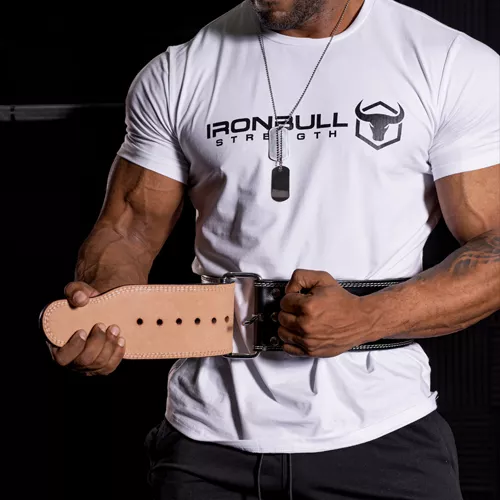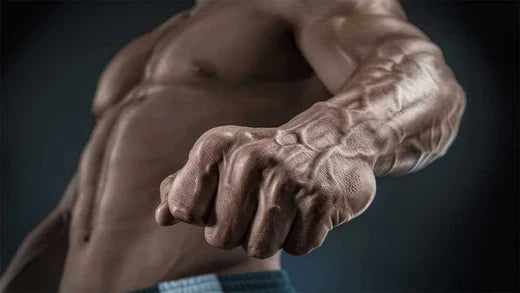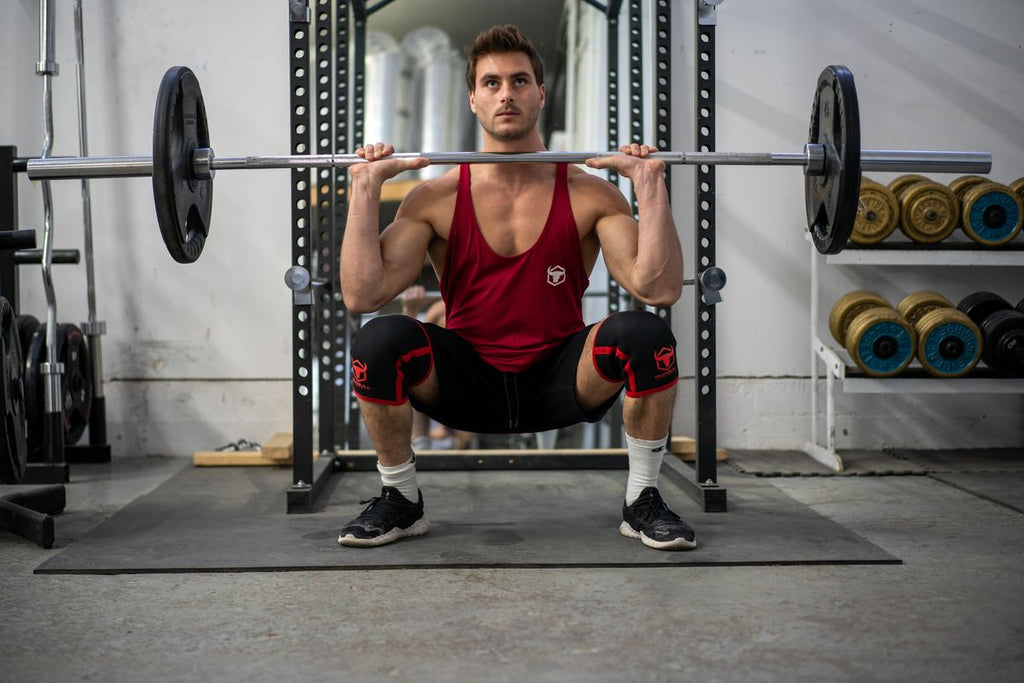Les vrais haltérophiles portent-ils une ceinture d’haltérophilie ?

L'autre jour, à la salle de sport, j'ai vu deux jeunes hommes faire du soulevé de terre. En plus du téléphone portable obligatoire, ils avaient une ceinture d'haltérophilie – une pour eux deux. Ils mettaient tout leur cœur à l'attacher à chaque série avant de s'approcher de la barre. Cela ressemblait à un rituel, une étape nécessaire avant de commencer leur soulevé de terre. Mais en les regardant effectuer leurs séries d'échauffement avec cette ceinture bien serrée autour de la taille, je n'ai pu m'empêcher de me demander : les ceintures aident-elles au soulevé de terre ? Les ceintures d'haltérophilie sont-elles devenues plus une béquille qu'un outil ?
Allons enquêter.
Comprendre le soulevé de terre
Même si cela peut paraître simple (il suffit de se lever, n'est-ce pas ?), une bonne forme de soulevé de terre nécessite une compréhension de la biomécanique, de l'engagement musculaire et des avantages de ses nombreuses variantes.
Le soulevé de terre est un exercice de musculation classique qui consiste à soulever une barre lestée du sol jusqu'à la position debout. Cet exercice développe la stabilité générale du corps, la force de préhension et la force de la chaîne postérieure. C'est un exercice fonctionnel composé impliquant des mouvements multi-articulaires (hanches et genoux).
Si certains classent le soulevé de terre comme un exercice pour le dos, d'autres le classent dans la catégorie des jambes . Tout dépend de la variante de soulevé de terre que vous pratiquez. Lors du soulevé de terre Sumo en position large, les quadriceps et l'intérieur des cuisses sont les muscles ciblés. Le soulevé de terre standard, qui utilise une position écartée des hanches, se concentre sur les fessiers, les ischio-jambiers et le bas du dos. D'autres variantes sont le rack pull, le soulevé de terre déficitaire et le soulevé de terre roumain, chacun ciblant un muscle différent.
Votre prise est essentielle pour réussir un soulevé de terre. Une prise ferme assure un transfert optimal de la force musculaire vers la barre. Elle empêche également la barre de glisser des mains. Intégrez des exercices de prise à vos entraînements pour renforcer votre prise sur la barre. Par exemple, la marche du fermier, les pincements de plaque et les prises statiques de la barre chargée.
La science derrière l'utilisation d'une ceinture pour les soulevés de terre
Examinons maintenant les preuves pour et contre l’utilisation de ceintures d’haltérophilie pour les soulevés de terre :
Avantages de la ceinture d'haltérophilie pour soulevé de terre
Pression intra-abdominale : Maintenir une pression intra-abdominale est crucial lors du levage de charges lourdes. C’est particulièrement vrai lors d’exercices composés comme le soulevé de terre. Cette pression agit comme une ceinture naturelle qui soutient la colonne vertébrale et réduit les risques de blessures. Le port d’une ceinture de musculation augmente la pression abdominale pendant le soulevé de terre. Elle offre un soutien supplémentaire pour appuyer le ventre contre la ceinture. En appuyant le ventre contre la ceinture, vous renforcez la ceinture abdominale, améliorant ainsi naturellement votre technique de soulevé de terre.
Une étude de 1999 a confirmé que le port d’une ceinture d’haltérophilie augmente la pression intra-abdominale et la stabilité de la colonne vertébrale. (1)
Flexion et compression vertébrales réduites : Une ceinture d'haltérophilie renforce le bas du dos en exerçant une pression sur l'abdomen. Cela réduit le risque de flexion vertébrale indésirable. La stabilité accrue maintient la colonne vertébrale alignée pendant le soulevé de terre, réduisant ainsi le risque de blessures.
Il a été démontré que le port d'une ceinture réduit la compression vertébrale. Une étude du British Journal of Sports Medicine a montré une réduction de la compression vertébrale avec une ceinture d'haltérophilie. Cela suggère qu'une ceinture contribue à la stabilité du tronc. (2)
Transfert de force : Une ceinture d'haltérophilie bien ajustée facilite le transfert de force lors des soulevés de terre. En contractant votre ceinture abdominale, vous exercez une tension en la serrant contre la ceinture. Cela relie vos jambes, vos hanches et la barre. La transmission efficace de la force dirige votre force de levage directement vers la barre, évitant ainsi les fuites d'énergie.
Vous pouvez soulever plus de poids : La pression intra-abdominale accrue exercée par la pression exercée sur votre paroi abdominale contre la ceinture vous aidera à soulever plus de poids. L'expérience en salle de sport suggère que le port d'une ceinture peut augmenter votre soulevé de terre de 5 à 15 %.
Réduction de l'effort perçu : Des recherches intéressantes suggèrent que le port d'une ceinture rend le poids plus facile à manipuler. Une étude de 2021 a porté sur 20 haltérophiles en bonne santé effectuant le soulevé de terre classique avec et sans ceinture, ainsi qu'avec ou sans sangles de poignet, pendant huit semaines. Tous les haltérophiles ont déclaré que l'exercice leur semblait plus facile avec la ceinture et les sangles. Ces résultats ont montré que le port d'une ceinture et de sangles réduisait l'effort perçu chez les haltérophiles amateurs. (3)
Inconvénients de la ceinture d'haltérophilie pour soulevé de terre
Utilisation excessive d'une ceinture d'haltérophilie : Utiliser trop souvent une ceinture d'haltérophilie peut vous amener à vous y fier. Vos muscles abdominaux et stabilisateurs risquent de ne pas se renforcer pleinement si la ceinture est utilisée comme béquille. Il peut alors être plus difficile de soulever des poids sans ceinture. Cela peut également masquer des problèmes de force abdominale.
Flexibilité et mobilité réduites : Une ceinture d'haltérophilie peut limiter votre flexibilité naturelle et votre amplitude de mouvement, notamment au niveau du bas du dos. Une utilisation excessive peut vous empêcher de solliciter pleinement les muscles du bas du dos et du tronc. Cela pourrait nuire à votre technique de levage et à la santé de votre colonne vertébrale à long terme.
Faux sentiment de sécurité : Porter une ceinture peut donner l'impression d'être plus en sécurité. Elle peut contribuer à la stabilité de la colonne vertébrale, mais ne garantit pas une technique de levage adéquate. La ceinture ne vous protégera pas des blessures si votre posture chute à cause de l'épuisement ou d'une mauvaise technique.
Qui devrait porter une ceinture pour les soulevés de terre ?
Portez une ceinture si :
- Vous utilisez des charges proches du maximum : attachez une ceinture lorsque vous soulevez 80 % ou plus de votre maximum sur une répétition.
- Vous souffrez d'une blessure au bas du dos : le port d'une ceinture peut offrir un soutien supplémentaire aux personnes souffrant d'une blessure au dos. Cela réduit le risque de nouvelle blessure.
Les groupes suivants sont mieux lotis sans ceinture :
- Débutants : Les débutants doivent perfectionner leur technique et leur gainage avant d'utiliser une ceinture. Apprendre une excellente technique de soulevé de terre sans ceinture devrait être une priorité pour les nouveaux athlètes.
- Les haltérophiles se concentrant sur la force fonctionnelle et l'activation du tronc : Certains haltérophiles, en particulier ceux qui se concentrent sur la force fonctionnelle et l'activation du tronc, peuvent choisir de ne pas utiliser de ceinture pendant les soulevés de terre pour mieux impliquer leurs muscles abdominaux.
- Personnes souffrant d'hypertension artérielle : une pression intra-abdominale élevée peut augmenter la tension artérielle. Si vous êtes sujet à l'hypertension artérielle, la meilleure solution est de pratiquer le soulevé de terre sans ceinture.
Quand faut-il commencer à utiliser une ceinture pour les soulevés de terre ?
Les débutants ne doivent pas utiliser de ceinture d'haltérophilie. Ils doivent acquérir des bases solides en termes de technique et de gainage. L'entraînement au soulevé de terre doit se concentrer, pendant les six premiers mois, sur le perfectionnement du mouvement de base, l'utilisation des muscles profonds et le développement de la conscience corporelle générale. Cela permet d'acquérir des pratiques de levage sûres sans recourir à une ceinture.
Les haltérophiles ayant plus de six mois d'entraînement peuvent introduire une ceinture, mais ne doivent pas l'utiliser pour chaque série. Elle doit être réservée aux une ou deux dernières séries de poids maximal. Celles-ci doivent comporter un intervalle de 8 répétitions maximum et représenter au moins 80 % de votre maximum par répétition.
Comment porter une ceinture pour les soulevés de terre ?
Savoir porter correctement une ceinture d'haltérophilie lors des soulevés de terre vous offrira un maintien optimal sans restreindre vos mouvements. Voici un guide étape par étape :
Choisissez la bonne ceinture : optez pour une ceinture d'haltérophilie bien ajustée et de qualité. Elle doit être solide et résistante, plus large à l'arrière et plus étroite à l'avant.
Positionnement : Enroulez la ceinture autour de votre taille, juste en dessous des côtes et au-dessus de l'os iliaque. Si vous pratiquez le soulevé de terre sumo, positionnez-la 2,5 cm plus bas. Cela offre un meilleur soutien et une meilleure tenue du tronc en position basse.
Serrez la ceinture : utilisez le mécanisme de serrage pour serrer la ceinture. Elle doit être bien ajustée, mais pas trop serrée. Quelques doigts doivent passer entre la ceinture et votre taille.
Sollicitez vos muscles abdominaux : Avant de commencer, prenez une grande inspiration et appuyez votre ventre contre la ceinture pour activer vos muscles abdominaux. Cela produit une pression intra-abdominale, favorisant ainsi la stabilité et le maintien du tronc.
Meilleures ceintures pour le soulevé de terre
Il existe une grande variété de ceintures d'haltérophilie sur le marché, chacune possédant des caractéristiques uniques. La meilleure ceinture pour le soulevé de terre dépend de votre objectif d'entraînement et de vos préférences en matière de fixation. Voici un aperçu :
Dynamophilie
Les haltérophiles ont besoin d'une ceinture offrant un bon maintien et une bonne rigidité pour supporter des charges maximales. Le daim et le cuir sont des choix populaires, les haltérophiles préférant généralement une largeur standard pour maximiser la pression intra-abdominale. Les ceintures de dynamophilie doivent avoir une épaisseur de 10 à 13 mm et une boucle robuste à ardillon ou à levier.
[En rapport : Courroie à levier ou courroie à griffes : laquelle est la meilleure ? ]
Les ceintures de dynamophilie Iron Bull Strength sont leaders du marché. Découvrez-les ici .
Musculation
Les culturistes ont besoin d'une ceinture un peu plus souple que les haltérophiles. En effet, elle sera utilisée pour une plus grande variété d'exercices. Nous recommandons une ceinture en cuir fuselée, car elle offre un soutien dorsal optimal tout en offrant une plus grande liberté de mouvement à l'avant du corps. Un système de fixation est indispensable pour enfiler et retirer rapidement la ceinture entre les exercices. Les systèmes à velcro et à levier sont très répandus.
La ceinture de levage Unleash 7 mm d'Iron Bull Strength est le support incontournable pour de nombreux culturistes amateurs et professionnels.
Condition physique générale
Les haltérophiles ont besoin d'une ceinture encore plus souple que les culturistes. Les ceintures en nylon sont idéales, car elles sont légères, flexibles et faciles à fixer. Choisissez une ceinture fuselée pour une liberté de mouvement totale.
La ceinture de levage en nylon renforcé de 6 pouces d'Iron Bull Strength est la préférée des amateurs de gym du monde entier.
CrossFit
Les adeptes du CrossFit recherchent une ceinture souple et sécurisée, qui ne gêne pas et s'enfile et se retire facilement. Privilégiez les ceintures en nylon, légères et faciles à utiliser. Privilégiez une ceinture de 7 à 10 mm d'épaisseur, confortable à porter pour passer d'un exercice de force à un exercice cardio.
Les CrossFitters adorent le confort de soutien de la ceinture en nylon renforcé Iron Bull Strength de 6 pouces .
Conclure
Une ceinture d'haltérophilie est un outil à utiliser sans excès. Réservez-la à vos séries les plus lourdes, où vous soulevez 80 % ou plus de votre charge maximale par répétition. Cela vous permettra de développer naturellement votre force abdominale. Vous pourrez également maintenir une posture stable sans vous appuyer sur la ceinture comme une béquille.
En attachant la ceinture pour vos séries professionnelles, vous optimiserez la pression intra-abdominale, améliorerez la stabilité du tronc et, en fin de compte, retirerez plus de poids du sol !
Références :
- Cholewicki J, Juluru K, Radebold A, Panjabi MM, McGill SM. La stabilité du rachis lombaire peut être améliorée par une ceinture abdominale et/ou une augmentation de la pression intra-abdominale. Eur Spine J. 1999;8(5):388-95. doi: 10.1007/s005860050192. PMID: 10552322; PMCID: PMC3611203.
- Bourne ND, Reilly T. Effet d'une ceinture d'haltérophilie sur le rétrécissement de la colonne vertébrale. British Journal of Sports Medicine 1991 ; 25 : 209-212.
- Fong SSM, Chung LMY, Gao Y, Lee JCW, Chang TC, Ma AWW. Influence des ceintures et des sangles de poignet d'haltérophilie sur la cinématique du soulevé de terre, le temps nécessaire pour le réaliser et l'évaluation de l'effort perçu chez les haltérophiles amateurs masculins : une étude observationnelle. Medicine (Baltimore). 18 février 2022 ; 101(7) : e28918. doi : 10.1097/MD.0000000000028918. PMID : 35363215 ; PMCID : PMC9282110.


